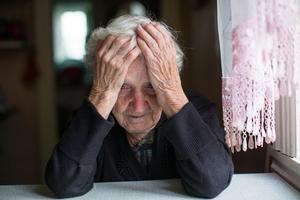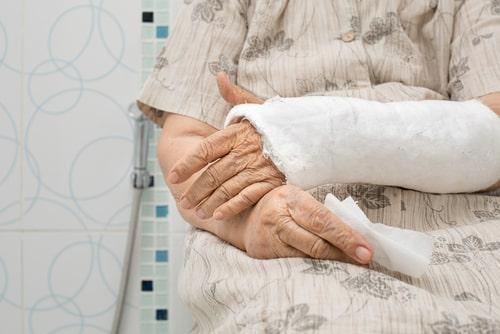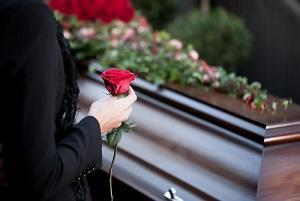Recent Blog Posts
Illinois Nursing Home Residents Are at High Risk of Physical Abuse
 When a family has to decide whether to put a beloved and respected elder in a nursing home, it is often a heartbreaking and difficult choice. A family must place enormous trust in a residential care facility’s ability to provide medical care, physical safety, financial security, and a healthy daily routine for a parent or grandparent.
When a family has to decide whether to put a beloved and respected elder in a nursing home, it is often a heartbreaking and difficult choice. A family must place enormous trust in a residential care facility’s ability to provide medical care, physical safety, financial security, and a healthy daily routine for a parent or grandparent.
Unfortunately, nursing home staff do not always treat residents with dignity and respect. Understaffed and overstressed employees often do not have the time or the energy to monitor every patient sufficiently and it can be easy for an abused patient’s symptoms or complaints to go unnoticed. This is especially true when a patient suffers from dementia or another condition that makes it hard to speak or discuss a problem in detail. It is essential for the families of nursing home residents to be aware of signs of physical abuse so if it is present, it can be stopped and justice can be pursued with the help of a nursing home abuse attorney.
What Can I Do If My Loved One Suffers a Breathing Tube Injury in an Illinois Nursing Home?
 Some Illinois nursing home residents have difficulty breathing by themselves. Many medical respiratory issues can cause breathing difficulties, such as pneumonia, emphysema, and chronic obstructive pulmonary disease. Traumatic brain injuries and degenerative brain disease can also make independent breathing difficult. When a patient in a nursing home struggles to breathe independently, intubation may be necessary.
Some Illinois nursing home residents have difficulty breathing by themselves. Many medical respiratory issues can cause breathing difficulties, such as pneumonia, emphysema, and chronic obstructive pulmonary disease. Traumatic brain injuries and degenerative brain disease can also make independent breathing difficult. When a patient in a nursing home struggles to breathe independently, intubation may be necessary.
Putting a plastic tube into a patient’s airway, or intubation, is a fairly common procedure. But the sensitive tissue in human airways means medical staff must exercise caution when inserting, removing, or adjusting the tube. Sometimes improperly administered breathing tubes can cause serious enough damage that a patient can die. If someone you love has been hurt or killed by a breathing tube injury in their nursing home, you may want to speak with an attorney.
Improper Catheter Use in Illinois Nursing Home Patients Can Cause Injury and Infection
 When nursing home residents cannot urinate on their own, often due to mobility or medical issues, catheters may be used. A urinary, or foley, catheter is a small, thin tube made of soft and flexible material that is inserted into the bladder via the urethra to collect a patient’s urine. While catheters can be very useful, they are not without risks.
When nursing home residents cannot urinate on their own, often due to mobility or medical issues, catheters may be used. A urinary, or foley, catheter is a small, thin tube made of soft and flexible material that is inserted into the bladder via the urethra to collect a patient’s urine. While catheters can be very useful, they are not without risks.
Unfortunately, nursing home staff will sometimes improperly administer catheters. Whether due to understaffing, undertrained staff, or unnoticed catheter-related complications, catheters can quickly place a patient at serious risk of infection and in need of further treatment. If you believe your loved one has been injured by a catheter due to nursing home abuse or neglect, an experienced Illinois nursing home injury attorney may be able to help.
Safe Catheter Use is Essential
While the idea of a catheter might be uncomfortable to think about, it is essential for families of nursing home patients to understand how appropriate catheter use looks and functions. That way, if something is wrong, family and other loved ones may be able to identify symptoms of catheter complications. Nursing home staff are expected to use the following procedures:
Illinois Nursing Home Residents Can Be Seriously Injured When They Wander Into Kitchens
 Under Illinois law, nursing homes have a responsibility to provide their residents with an appropriate standard of care. This includes allowing residents to manage their own affairs unless otherwise specified, keep their personal property, retain their own doctor if desired, and provide any security and other protection necessary to keep the residents safe from harm.
Under Illinois law, nursing homes have a responsibility to provide their residents with an appropriate standard of care. This includes allowing residents to manage their own affairs unless otherwise specified, keep their personal property, retain their own doctor if desired, and provide any security and other protection necessary to keep the residents safe from harm.
For some residents, particularly those with degenerative brain diseases like Alzheimer’s, this means providing extensive supervision and using other measures that keep residents from wandering around or off the premises. Wandering and elopement (leaving the nursing home altogether) pose serious dangers to residents who are unaware of their surroundings and of what they need to do to keep themselves safe. One area in particular–a nursing home’s kitchen–is a source of many serious injuries to wandering nursing home residents.
Icy Walkways Pose a Serious Hazard for Elderly Nursing Home Residents
 Winter weather is notoriously bad in the midwest, and although Chicago is allegedly known as “The Windy City” for political reasons, the nickname suits the weather as well. Repeated days of snow, rain, and ice followed by weeks of sub-zero temperature and zero sunshine can make sidewalks hazardous to everyone.
Winter weather is notoriously bad in the midwest, and although Chicago is allegedly known as “The Windy City” for political reasons, the nickname suits the weather as well. Repeated days of snow, rain, and ice followed by weeks of sub-zero temperature and zero sunshine can make sidewalks hazardous to everyone.
Residents of nursing homes are particularly vulnerable to slipping and falling, even on safe, stable surfaces. But when nursing home caretakers fail to manage nursing home outdoor premises, frail elderly residents can be put at risk of serious injuries when they fall on slippery surfaces. If you have a loved one in a nursing home who has recently suffered from a fall, an experienced Illinois nursing home attorney may be able to help you.
Common Injuries from Nursing Home Slip and Fall Accidents
Elderly residents often have lower bone density and are more prone to hurting themselves when they fall. They are also at greater risk of falling because of difficulty walking and maintaining proper balance. When nursing home residents wander outside or are allowed to walk outside with visitors, winter weather can increase the risk of slipping and falling.
Foodborne Illness Can Be Fatal in Nursing Home Residents
 Unsanitary conditions in nursing home kitchens can run the gamut from disgusting to downright dangerous. Undercooked meat, bugs in food storage areas, unsanitized cooking equipment, and food left unrefrigerated for too long all constitute food safety violations–but more importantly, they allow for dangerous pathogens to develop.
Unsanitary conditions in nursing home kitchens can run the gamut from disgusting to downright dangerous. Undercooked meat, bugs in food storage areas, unsanitized cooking equipment, and food left unrefrigerated for too long all constitute food safety violations–but more importantly, they allow for dangerous pathogens to develop.
Nursing home residents are often in frail health and are particularly vulnerable to the risks of improper food handling. Because food poisoning may sound more quotidian than bedsores and sepsis, it tends to get less attention–but it can be just as dangerous. If your loved one has experienced sickness, hospitalization, or death in their long-term care facility because of foodborne illness, an experienced nursing home injuries attorney may be able to help.
Know the Dangers of Foodborne Illness to Elderly Residents
Improper Monitoring Can Lead to Serious Burns in Illinois Nursing Home Residents
 Nursing home residents often depend on their caregivers for help with every aspect of their life. When nursing home staff are negligent, careless, or overworked, nursing home residents can suffer. Families who put their trust in a nursing home may be shocked to discover how poorly their loved one is treated, or, worse, find out about negligent treatment when the consequences have already been serious or even fatal.
Nursing home residents often depend on their caregivers for help with every aspect of their life. When nursing home staff are negligent, careless, or overworked, nursing home residents can suffer. Families who put their trust in a nursing home may be shocked to discover how poorly their loved one is treated, or, worse, find out about negligent treatment when the consequences have already been serious or even fatal.
One of the most common types of injuries caused by nursing home negligence is severe burns. Even small activities like drinking from a too-hot cup of soup can cause an elderly body serious injury; this is all the more true with major daily activities like showering in water that is too hot. If you are concerned that nursing home negligence led to your loved one getting burned in their nursing home, read on.
Common Causes of Nursing Home Burns
What Can I Do If My Loved One’s Nursing Home Did Not Treat a Wound Correctly?
 Residents of nursing home facilities live there because they are unable to properly care for themselves. Physical illness, Alzheimer’s disease, and other age-related health problems make residents particularly vulnerable and dependent on the nursing home for many things – food, personal cleanliness, emotional security, and physical safety.
Residents of nursing home facilities live there because they are unable to properly care for themselves. Physical illness, Alzheimer’s disease, and other age-related health problems make residents particularly vulnerable and dependent on the nursing home for many things – food, personal cleanliness, emotional security, and physical safety.
Not all accidents or injuries are preventable, but when injuries occur, nursing homes are responsible for treating wounds and keeping them clean. Without an appropriate standard of care, wounds can fail to heal and even get worse. In the worst cases, nursing home neglect can cause improperly treated wounds that can lead to local infections, the onset of sepsis, and even fatalities.
Common Wounds Seen in Nursing Home Residents
Due to their fragile nature and frequent inability to move independently, nursing home residents are at an increased risk of injuring themselves. When a young person gets hurt, their body can frequently heal itself without complications or substantial care. Elderly people’s wounds, however, require increased monitoring, treatment, and cleanliness so soft tissue can heal properly.
Seven Signs of a Bone Fracture in a Cook County Nursing Home Resident
 Few people want to think about themselves or anyone else suffering from a fractured or broken bone, but they are common injuries that result from daily living. For most people, communicating the pain of a bone injury is easy to do because such an injury is difficult to mistake for anything else.
Few people want to think about themselves or anyone else suffering from a fractured or broken bone, but they are common injuries that result from daily living. For most people, communicating the pain of a bone injury is easy to do because such an injury is difficult to mistake for anything else.
Some bone fractures, however, do not necessarily have outward indicators that would let an observer immediately know that something is wrong. This can be especially hazardous to an elderly nursing home resident who may struggle to communicate that they are in pain. Nursing home staff and managers have a responsibility to ensure that any bone fractures are quickly diagnosed and treated, but they may fail to do so for many reasons. If your loved one is in a nursing home and you fear they may have suffered from abuse or neglect due to a failure to diagnose a bone fracture, read on.
When is a Nursing Home Death a Wrongful Death?
 The decision to place a loved one in a nursing home is never easy. Most people wish that they did not have to move their elderly or disabled loved one out of their home and into a long-term care facility, but they often do not have another choice. Nursing homes are filled with residents who need more extensive medical care and help with daily living tasks than a family member could handle on their own.
The decision to place a loved one in a nursing home is never easy. Most people wish that they did not have to move their elderly or disabled loved one out of their home and into a long-term care facility, but they often do not have another choice. Nursing homes are filled with residents who need more extensive medical care and help with daily living tasks than a family member could handle on their own.
Many nursing home residents are quite frail, and when nursing home staff do not properly care for the residents or meet their medical needs, the results can be deadly. If your loved one passed away while staying in a nursing home and you believe the death was due to negligence or abuse, do not hesitate to contact a qualified nursing home abuse injury lawyer for help.
What is the Definition of a Wrongful Death?
Because many nursing home residents are elderly or in poor health when they arrive at the facility, it is not surprising that many residents pass away while staying in the facility. Consequently, it can sometimes be difficult to know if a loved one’s death was preventable or not. The term “wrongful death” refers to deaths that happen as a result of the negligent or intentionally harmful acts of another. The Wrongful Death Act in the Illinois Complied Statutes technically defines a wrongful death as a death resulting from “a wrongful act, neglect or default.” This means that a nursing home staff member’s action or inaction may be to blame for the death of a resident. Other times, it is the nursing home facility itself that is the subject of a wrongful death lawsuit.

 312-535-4625
312-535-4625





